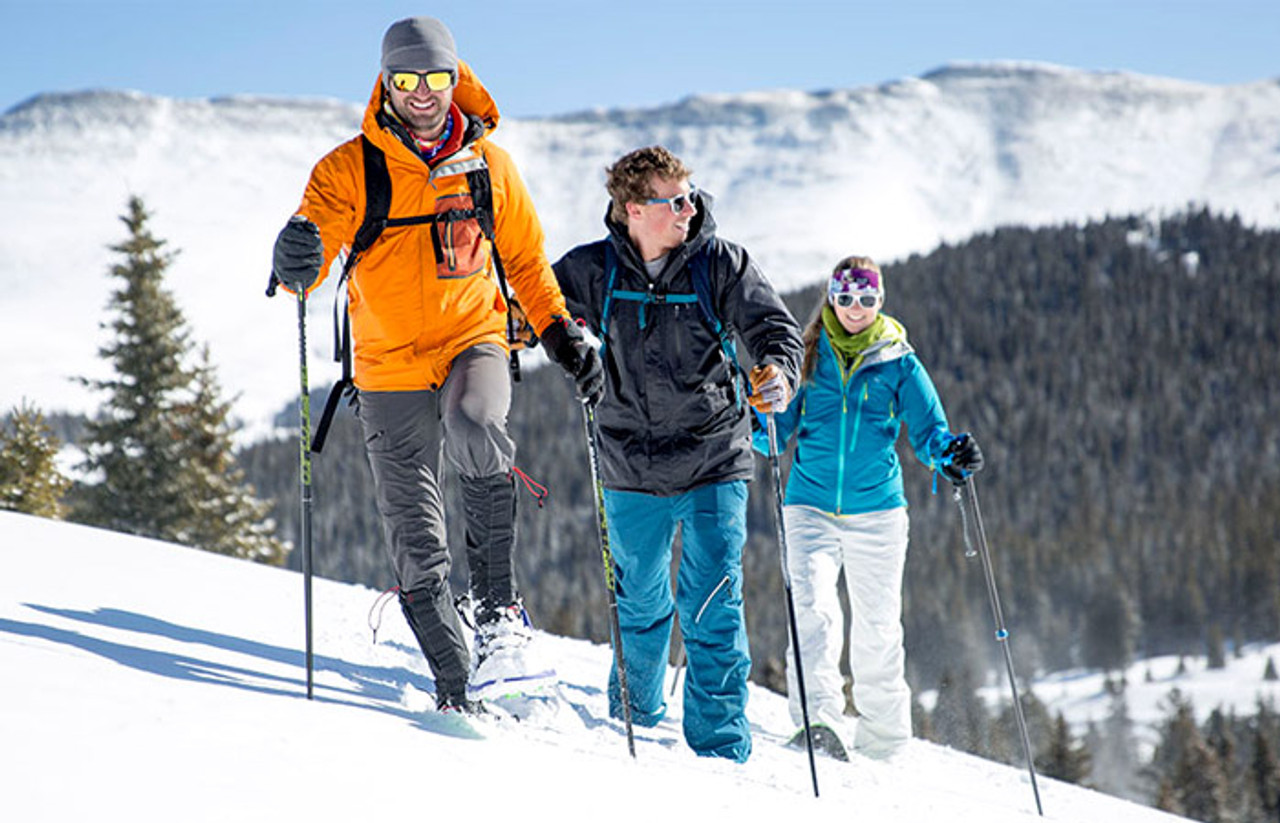A Guide To Snowshoeing Uphill
Posted by Crescent Moon on Mar 10th 2020
Among the possible ways to explore the outdoors, there is little that can compare to snowshoeing. This a great way to not only get some exercise but also gaze at the wonders of nature. For those who want to explore snowshoeing, there are a few challenges that this sport will present. One of the biggest involves snowshoeing uphill. There are a few important tips that everyone should keep in mind.
Snowshoeing Uphill: Tips
When someone typically walks uphill, there are a few common muscles that are going to be used. A lot of weight is placed on the toes and the heels come off of the ground when someone drives forward. A similar process unfolds when someone goes snowshoeing uphill. There are a few tips that can make this easier. First, take a look at the hill. It is critical to look for any loose rocks or ice. This can present a major avalanche danger. Then, assess how long of a walk it is going to be. Some hills might only be a few steps while others might seem like they go uphill forever. Make sure you are in shape enough to tackle this hill.
When you start to move uphill, keep the weight at the front of the foot. Use poles to provide extra balance and support. Kick the foot in when you land to provide better support. Press down with force to provide extra traction. This will make the hike easier.
Come Back Down on Snowshoes: Advice
When the process shifts downhill, a few changes are in order. In this case, heel traction is going to be what helps someone get down again. Place plenty of weight on the heels to ensure there is enough support for each step. Try to keep the knees bent slightly. This is going to lower your center of gravity and make sure you are balanced as you move. It can also be helpful to wear angled crampons as these are specifically designed for walking downhill. You can also use snow poles while descending to create additional points of contact with the ground. This is going to give you extra balance.
If you are snowshoeing during the spring, you might begin to slide. This is normal. Just stay relaxed. Try to release the stance slightly and slide with the pack. This happens when the ground beneath the snow starts to heat up. Then, the poles and feet move the snow downward.
A Point About Heel Lifts and Snowshoes
When someone is walking uphill, it is normal for the calves and feet to begin to burn. In this situation, heel lifts can be helpful. The goal of heel lifts is to shift the angle at which the feet strike the ground. With the heel lifts, the foot will form a 90-degree angle with the leg. This will provide someone with more force from which they can lift off of the ground.
While heel lifts are helpful going uphill, they will work against someone when they are snowshoeing downhill. Therefore, think about removing these heel lifts and replacing them with turned up tails. This will help someone go through the stride more gracefully. This can make the whole process much easier.
Think About the Snow Before Snowshoeing
Finally, it is also a good idea to consider the snow. The snow conditions are going to matter when it comes to the hike. Fresh, fluffy snow is beautiful to look at; however, it is easy to sink through the snow. This will make it harder to step into and out of the snow, burning more calories and making the walk harder. In contrast, hard snow is better for grip and traction. This will make the walk easier. For those who want to burn more calories, look for fresh snow that goes uphill.
Visit Crescent Moon Today
With the help of exceptional equipment and advice from Crescent Moon, even beginners can tackle a steep uphill climb. If you are looking for a great workout in the beautiful outdoors, then swing by Crescent Moon today. We are proud to offer the latest equipment in the world of snowshoeing. Count on us to help you make the most of your outdoor adventures.
